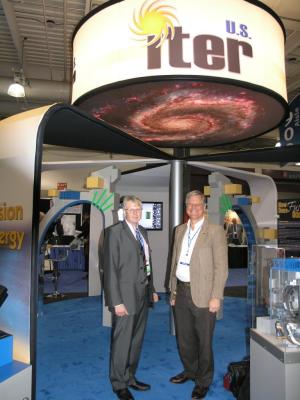If CO2 were purple: ITER goes to AAAS
"Provision of clean energy in the world is our most pressing problem and one we can only tackle together." In his opening address of this year's meeting of the American Association for the Advancement of Science (AAAS) in Boston, its president, the Nobel Prize Winner David Baltimore, left no doubt about what will be the key issue for science and technology - seen from a global perspective. Given the increasing energy demand of the two "big boys", China and India, together representing more than 50 percent of the world's population, the door is open for joint effort to tackle this issue.
Invited to represent large-scale international collaborations, ITER Principal Deputy Director-General Norbert Holtkamp, amongst scientific "heavy weights" such as Robert Aymar from CERN, Barry Barish from the International Linear Collider (ILC) and Anneila Sargent from the Atacama Large Millimeter Array (ALMA), explained to the audience of scientists and science writers the purpose of the ITER international collaboration in search for a new clean energy source, and what the challenges were.
Then, in a special session at this 174th AAAS meeting, the declassification of magnetic confinement fusion at the Geneva Conference 1958 was celebrated. Senior fusion scientists such as Evgeny Velikhov from the Russian Kurchatov Institute and Prediman Kaw, Director of the Plasma Research Institute in Bhat, India and Chair of the Science and Technology Advisory Committee to ITER sketched out the past 50 or even 80 years from the first written theory to the ITER project today and beyond. In an rousing speech, the Chairman of the ITER Council, Sir Chris Llewellyn Smith, finally pointed the way to a fast track to commercial fusion power plants. "The stakes justify a much more aggressive approach," Llewellyn Smith said. "If CO2 were purple, more people would worry about it."


